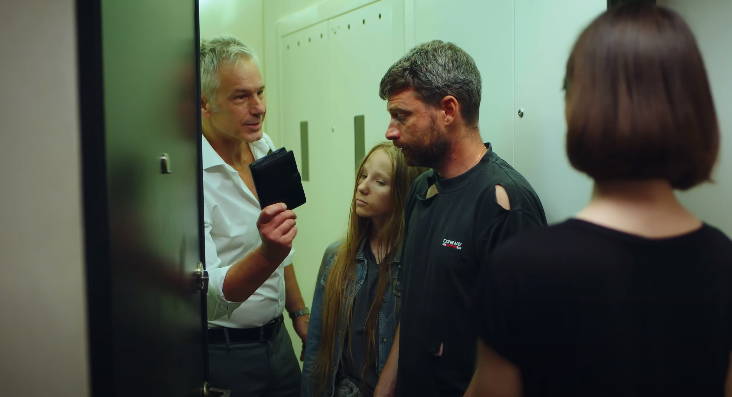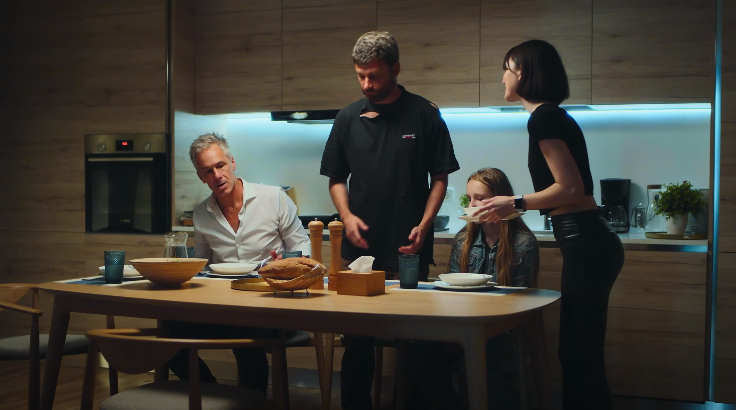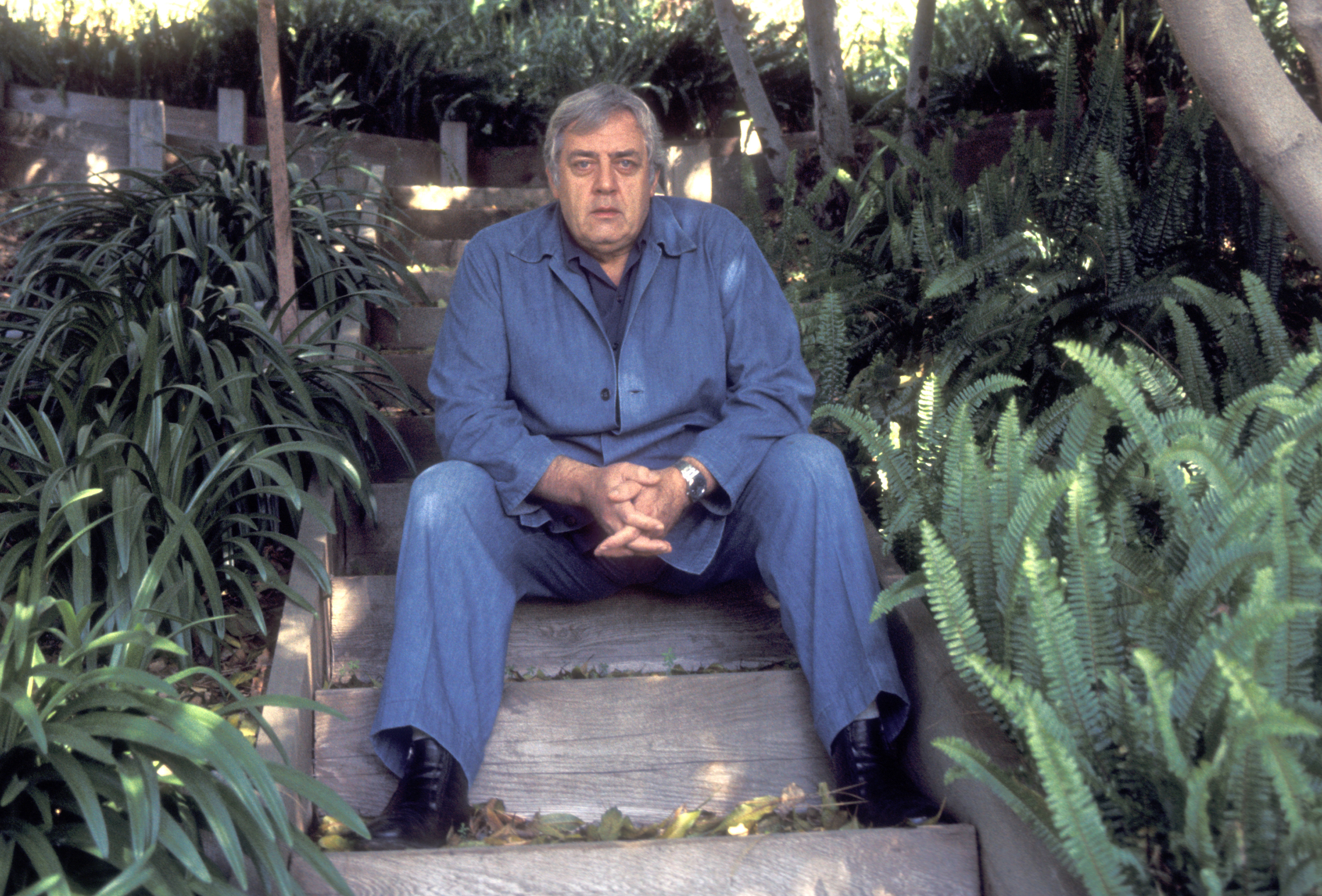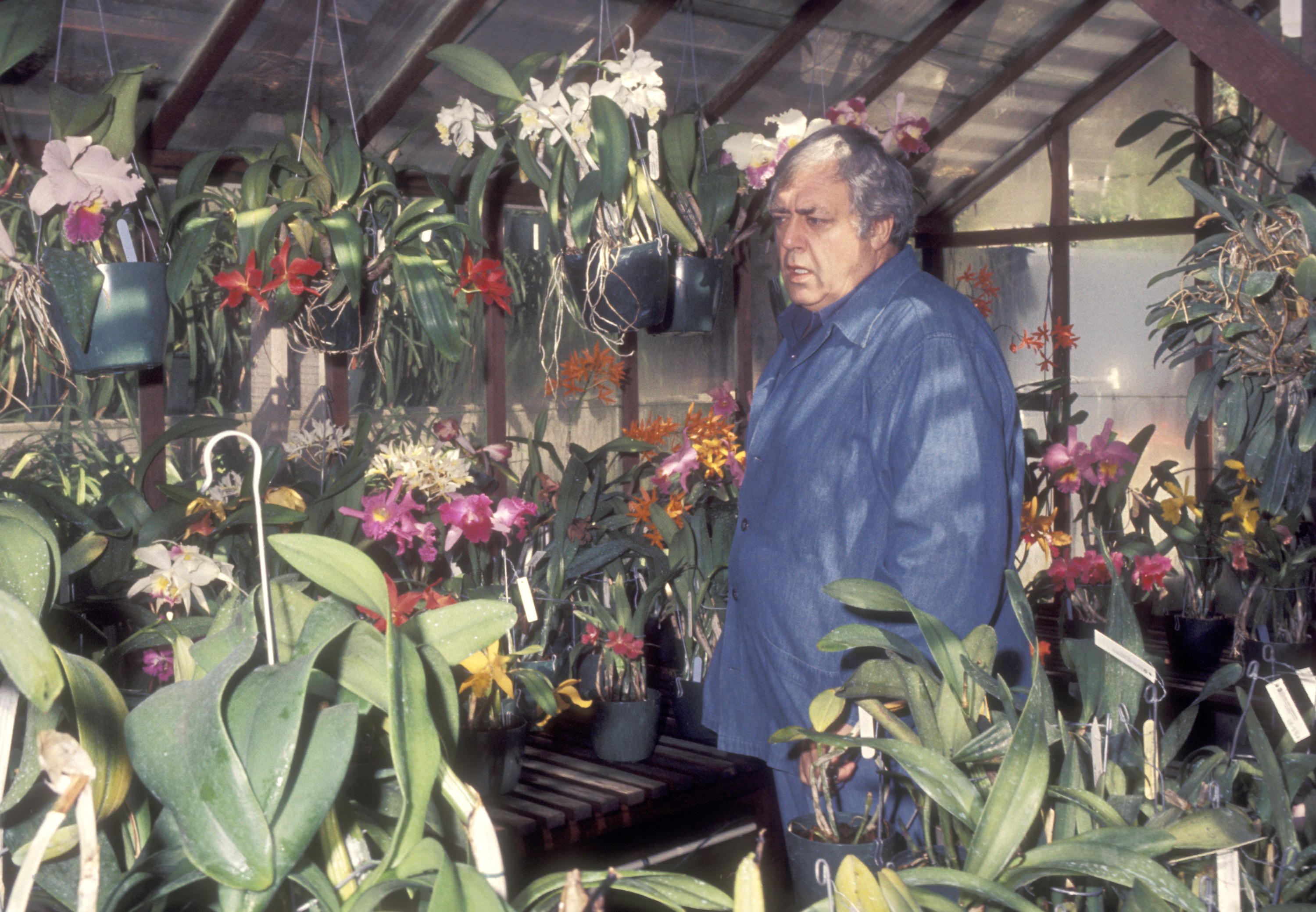It doesn’t take a lot to go from having a roof over your head to being out on the streets. All it might take is one bad choice, one bad day at work, or simply a cruel twist of fate.
Here are five stories of individuals who lost their homes during the hardest times of their lives. Though this was just the beginning of even tougher challenges, they never gave up hope.
1. Amber: I Had to Starve Myself for a Whole Week to Buy a Cellphone
Life really knows how to catch you off guard, and I learned that the hard way. My name’s Amber.
Until recently, I was living what I thought was the dream life with my husband Louis and our son Allen in a lovely home. We seemed so happy. Then, suddenly, everything changed.
“I think we rushed into things, Amber. I’m sorry, but I can’t do this anymore!” Louis announced one evening as he packed up. My heart just sank.
For illustration purposes only | Source: Pexels
“Louis, please tell me you’re kidding. You can’t just leave us like that! What about Allen? He’s only two!” I pleaded, hoping he was joking.
“That’s exactly the problem, Amber!” he retorted. “I’m tired of all the responsibilities. I need time for myself. I’ve found someone who gets what I’m going through. Please, just let me go.”
That night, as he walked out, I just fell apart. How could the man I loved, who had never shown any signs of unhappiness, suddenly decide to abandon his family?
Once Louis was gone, reality hit me hard. I struggled to find a job while taking care of Allen alone.
Two weeks later, our landlady evicted us as I couldn’t pay the rent, and Social Services took Allen, thinking he’d be safer away from our unstable situation.
For illustration purposes only | Source: Pexels
That night, I was homeless and heartbroken. My baby, my child, was taken away from me.
I sold everything I had, including my phone, and that kept me going for a while. Then, the money ran out.
One evening, out in the cold, I remembered my dad’s warnings about Louis. “He’s not right for you,” Dad had said. I wish I’d listened. Desperate to reconnect with him, I decided to buy a phone to call him.
I knew that if I borrowed a phone to call him, maybe he wouldn’t pick up the first time or even the second. But I’d have to keep trying. Or maybe no one would lend their phone to a homeless woman like me. I needed a phone of my own.
So I starved myself for a week to save enough to buy a second-hand phone. My tears didn’t stop when I dialed Dad’s number, and he answered.
For illustration purposes only | Source: Pexels
“Hello? Who’s this?” he asked.
“It’s… Amber, Dad,” I sobbed into the phone.
“Amber, sweetheart! Is that you? Oh my goodness! How are things going?”
“Is-Is everything okay, honey?”
“Just come as soon as possible, Dad!” I said.
For illustration purposes only | Source: Pexels
He arrived quickly, and in a hotel room, I poured out my heart about the betrayal and my days on the streets. Dad comforted me, promising everything would be alright now.
The next day, Dad and I went to the orphanage to start the paperwork to bring Allen home. Once everything was finalized, Dad took Allen and me to New York.
He also hired a private detective to find out where Louis was. It turned out Louis had been cheating on me with his boss’s daughter, pretending to be single.
When his boss found out the truth — that Louis was married and had abandoned his family — he fired him. Louis ended up living on the streets. While I took no joy in his downfall, it felt like justice was done.
Back home, with my dad and Allen, I felt stronger. Life had knocked me down but taught me resilience. And with Dad’s support, I knew we could face anything ahead.
For illustration purposes only | Source: Pexels
“Life can be tough, but so are you, Amber. Besides, I’ll always be here for you,” Dad reminded me as we watched Allen play one day.
I thanked him, overwhelmed with gratitude. “Thanks, Dad. For everything.”
As I tucked Allen into bed that night, I thought about our future. It wouldn’t be easy, but with love and support, we were ready for whatever came next. Life’s tough, but so are we. Now, it’s time to look forward to the new beginnings waiting for us.
Coming up next is Brandon’s story, a homeless man and father of 3 living in a tent. One day, he decided to help a stranger, ignoring his own needs, and his life was never the same again.
2. Brandon: I Gave My Last $2 to a Stranger at a Gas Station, the Next Day I Inherited His Company
Four months on the streets with my three kids taught me a lot about life’s harshness and the small acts of kindness that can keep hope alive.
For illustration purposes only | Source: Pexels
We lived in a tent near a gas station, a makeshift home barely shielding us from the cold and stares of those who passed by. It was tough, but we managed to find moments of joy and laughter, making the best of our situation.
One chilly morning, as I counted the few coins I had left, I decided to head into the gas station to buy a can of beans — our planned dinner for the evening.
Inside, I stumbled upon a scene that jolted my heart. An elderly man stood at the counter, confusion written all over his face.
“I’m sorry, young lady, what did you say about the water being funny?” he asked.
“Money! I said you don’t have enough money, sir!” the cashier snapped.
For illustration purposes only | Source: Unsplash
“Yes, it is a sunny day!” he replied, misunderstanding her frustration.
The situation escalated as a young man in line grabbed the elderly man by the shoulder, yelling into his ear, “You need more cash! For the water!”
Watching this, my heart sank. The elderly man just wanted a bottle of water to take his pills, but his request for a smaller, affordable bottle was met with hostility. “If you can’t afford to pay, you’ll have to go!” the cashier shouted.
I couldn’t stand idly by. Stepping forward, I emptied my cup of change onto the counter. “Have a heart, lady,” I said, deciding to pay for the man’s water.
The cashier counted the money with distaste, accepting it reluctantly. “That’ll cover it,” she muttered. I left the can of beans on the counter and handed the water to the elderly man.
For illustration purposes only | Source: Pexels
“Here you go, sir. I got your water,” I spoke clearly, making sure he could read my lips. He had hearing issues.
“Why did you help me when you obviously needed the money?” he asked me as we left the store, noticing my tent nearby where my daughter was helping her siblings wash up.
“If there’s one thing I’ve learned from being homeless, sir, it’s that the world works when people are kind to each other. Sadly, nobody was going to help you at the store,” I explained.
“But what are your kids going to eat?” he questioned, concerned.
“We have the last of yesterday’s bread, and there’s a chance I’ll find some scraps at the fast food joint across the street,” I assured him, though my heart was heavy with uncertainty.
For illustration purposes only | Source: Pexels
The next morning, life took an unexpected turn. Two jeeps parked near our tent, and a man in a fancy suit stepped out, holding an envelope.
“Mr. Grives’s last wish was for me to deliver this to you,” he said. Inside was a letter offering me the inheritance of his business — a gesture that stunned me completely.
“Is this some kind of joke?” I asked in shock and disbelief.
The man handed me legal documents, confirming the authenticity of the offer. With a mix of apprehension and hope, I signed the papers. This could be the break my children and I needed, a chance to escape the streets and have a real home.
We were driven to a massive, colonial-style mansion, a stark contrast to our humble tent. “Can we put up a tent under that tree with pink flowers?” my youngest, Derrick, asked innocently.
For illustration purposes only | Source: Pexels
“We’re going to live inside that house, silly! Right, Dad?” my daughter Kelly chimed in.
As I nodded, the reality of our new life began to sink in. Yet, the moment I opened the double doors, I realized something was wrong. The house was in disarray — someone had been there, and their intentions seemed scary.
“We’ve examined the entire perimeter of the house and found no sign of forced entry, sir,” the officer reported after I called 911. “And the fact that the security system appears to have been overridden using the correct code suggests that whoever vandalized this place had a legitimate means of gaining entry.”
That evening, I got an anonymous phone call. In a chillingly robotic yet menacing tone, the voice on the other end told me I had 24 hours to decline all that Mr. Grives’ left me, leave the house, or else I would lose everything I love.
For illustration purposes only | Source: Pexels
The mansion came with Mr. Grives’ loyal and resourceful staff, and one of them warned me that this could be the doing of Mr. Grives’ eldest son, Christopher. I resolved to go to the cops first thing in the morning.
But in the morning, I woke to my greatest fear come true: my kids were nowhere to be found! They had disappeared, and although the clever perpetrator had managed to hide his face from most of the CCTVs in and around the house, there was one he didn’t know about.
Mr. Grives’ staff watched in horror as they recognized the leader of three thugs drugging my children and taking them away. It was Christopher.
From there on, the cops, who held great respect for the late Mr. Grives, put every available man on the task of tracking Christopher, and didn’t rest until later that afternoon, when Christopher and his goons were spotted on the border of the state with my kids tied up in the back of an old van.
Christopher was arrested, and my children were safe. But their fear had set in deep, and I had a choice to make: to heal from the trauma and embrace the gift that kind soul left us, or to walk away from it all and rebuild from the start.
“Daddy, are we going to leave our home again…just like we did when Mommy died?” Kelly’s question broke my heart as we all cuddled up on the couch, trying to calm our hearts.
For illustration purposes only | Source: Pexels
I wrapped my arms around them tighter. “Listen, you three, there’s a lot of details that still need to be sorted out, but we’re going to be okay. You want to know why?”
Their curious eyes met mine, seeking reassurance.
“It’s because the most valuable thing we have is right here, in my arms. So long as we stick together, we’ll always be rich in the most important way: love. The world’s wealth comes and goes, kids, but the love we share for each other is a treasure nobody can take away from us.”
At that moment, surrounded by the chaos of our new reality, I knew that no matter what the future held, we had each other. And that was more than enough.
While Brandon was blessed with children who understand the value of kindness and love, Mr. Greg wasn’t. Coming up next is his story.
3. Mr. Greg: My Teen Daughter Humiliated the Homeless, I Had to Teach Her a Lesson
I always thought I was doing everything right for my daughter, Jane. I made sure she had everything she needed, but I missed teaching her something crucial — compassion for others. This hit me hard a few days ago when I lost my wallet.
For illustration purposes only. | Source: YouTube/DramatizeMe
After a fruitless search, I returned home to find Jane mocking a homeless man and his daughter at our doorstep. The shock set in when the man handed me my wallet, untouched. I was moved by that man’s gesture. Who does that these days?
But Jane dismissively called them “trash,” and spoke to them with so much disgust, it broke my heart. I knew I had to correct this, not just for them but for Jane, too.
That evening, I invited the man, Mark, and his daughter, Lolita, for dinner. It was my chance to teach Jane about generosity.
“Dad, check the money! He probably stole it!” Jane said as I checked my wallet. Everything was there. “All the money is here, sweetie. You’re mistaken,” I told her.
Seeing Mark’s and Lolita’s discomfort, I invited them to stay for dinner.
For illustration purposes only. | Source: YouTube/DramatizeMe
“Why don’t you guys join us?” I said. “It’s the least I can do to thank you.”
Jane wasn’t happy, and during dinner, she even gave them paper plates instead of proper dishes.
“Why not use the nice dishes I got you for your birthday?” I suggested, hoping to guide her to better manners.
As we ate, I encouraged Mark to share his story, but Jane kept interrupting with rude comments. Eventually, I lost my patience.
“Shut your mouth, Jane!” I snapped. “You don’t know the first thing about their lives. Misfortune could strike anyone.”
For illustration purposes only. | Source: YouTube/DramatizeMe
I then revealed a painful truth to Jane. “It’s my fault. I worked too much, especially after your mother passed. We were just like them once,” I confessed. “Do you remember our ‘camping trips’? We were actually homeless then.”
Jane was stunned. “How did we get back on our feet?” she asked quietly.
“A kind man gave me a job. That changed our lives,” I said with a sigh.
Then, I looked at Mark. “When I saw you today, I knew it was my turn to pay it forward,” I told him.
Mark nodded. “All I did was what a decent human should do. I don’t need anything in return,” he said.
For illustration purposes only. | Source: YouTube/DramatizeMe
“I had no idea, Dad. I’m sorry,” Jane said after a pause.
“It’s okay, honey. It’s not too late to learn from this,” I told her, hoping to comfort her.
When it was time for Mark and Lolita to go, I suggested, “Why don’t you both stay the night? We have plenty of room, and it’s getting late.”
Mark hesitated, then gratefully accepted. “Thank you, Greg. This means a lot.”
But I knew I wasn’t done helping them. Offering them a night’s shelter would not alleviate their problems. So I made a decision.
For illustration purposes only. | Source: YouTube/DramatizeMe
A little kindness costs nothing, guys, and I was ready to make sure that little Lolita and her dad had a good life.
The next day, I offered Mark a job as a driver and arranged a temporary home for them. “And I’ll help you as much as I can until you’re back on your feet,” I promised.
“Oh, God! Really?” Mark gasped. “Nobody is this kind nowadays, sir. This is going to change our lives. I won’t let you down, sir,” Mark told me in tears. “Thank you. Thank you so much!”
The smile on Lolita’s face that day made me realize I’d done the right thing. As for Jane…my Janie changed. She became a better person, and I’m so glad for that.
That’s not the end, though. I’m not the only one who decided to bring about a positive change in a homeless person’s life.
For illustration purposes only. | Source: YouTube/DramatizeMe
The next story is about Nancy, who, with her kind heart, decided to help her homeless ex get back on his feet. But what happened when her ex tried to break her and her current boyfriend up?
4: Nancy: I Helped My Homeless Ex, What He Did Next Left Me in Tears
I was walking out of the office with my boyfriend Christian one day, and we were about to head to a concert. That day, he’d surprised me with tickets to see my favorite singer!
It’d been a year and a half with Christian, and everything was magical. He was co-running my software firm with me, he was taking me on trips and vacations, and he seemed like the perfect guy. That is, until I ran into my ex.
“Excuse me, ma’am, could you spare some change?” A voice snapped me out of my daydream.
For illustration purposes only | Source: YouTube/DramatizeMe
I turned around and saw a homeless man by the office building, looking down.
I stepped closer, curious. “Joe?” I gasped, recognizing him.
Joe glanced up briefly, then looked away. It was indeed Joe, my first love from high school, now unrecognizable with a scruffy beard and worn clothes.
Christian came over, looking annoyed. “What’s going on here?” he asked sharply.
“This is Joe,” I said. “We went to high school together.”
For illustration purposes only | Source: YouTube/DramatizeMe
Christian looked disgusted. “This… beggar?”
I ignored him and hugged Joe, who was hesitant at first.
Christian got jealous and shoved Joe. “Stay away from her!” he told Joe sharply.
I didn’t feel that was the right way to treat someone. “Please, let me talk to him,” I requested Christian.
“Fine, but make it quick. We have plans,” he said, folding his arms.
I turned back to Joe. “What happened, Joe? You… here?”
For illustration purposes only | Source: YouTube/DramatizeMe
“Life, I guess,” Joe said with a shrug.
I couldn’t just leave him like this. “I’m sorry. Why don’t you come by the firm tomorrow? Ask for me on the third floor. There might be a job for you,” I offered, giving him some money for new clothes and a place to stay.
“Thank you, Nancy. I won’t let you down,” Joe said, grateful.
Christian stormed back to the car. Driving away, I felt good about helping Joe, even though Christian was upset.
The next day, Joe came to the office looking neat in the clothes I’d bought him. I didn’t know that Joe was suspicious of Christian. From the moment they met, Joe felt like Christian wasn’t a nice guy.
For illustration purposes only | Source: YouTube/DramatizeMe
At work that day, he happened to notice Christian and another colleague, Lily, closely. They seemed too friendly, and something about that bothered him.
Later, he caught them coming out of Christian’s office, Lily holding an envelope. He grew suspicious. The envelope looked thick, and Joe guessed there was cash in it.
So Joe snuck into Christian’s office to find out what was going on, but he got caught by Christian and was fired on the spot.
“What’s going on here?” I demanded when I arrived.
Christian accused Joe of stealing. Joe denied it, hinting at something wrong with Christian and Lily.
For illustration purposes only | Source: YouTube/DramatizeMe
My intuition kicked in. “I want to search your desk, Christian,” I said.
As I searched, I found a velvet box with a ring inside. “That was for you!” Christian said. “I was planning something for you, and Joe just ruined it!”
I was really overwhelmed by whatever had happened. I asked Joe to leave, then I told Christian that I needed space to think. It was after this that Joe did something that left me in tears.
In the parking lot, Joe confronted Christian. “I know what you’re hiding. The truth will come out, Christian,” he told him.
Christian laughed it off. “You have no proof, bum. Stay out of this!”
For illustration purposes only | Source: YouTube/DramatizeMe
Joe produced a set of documents he had gathered after sneaking into Christian’s office the second time. “These documents speak for themselves, Christian!” he said.
Christian smirked. “The real evidence is safe and sound—on my external hard drive. I’ll take it home and make sure it stays hidden,” he boasted.
“Really? What’s in there that isn’t here?” Joe goaded.
“As if I’m going to tell you,” Christian chuckled, confident. “It’s mostly…some creative accounting. You wouldn’t understand.”
I was hiding behind a pillar, listening to the conversation and recording it.
It was time to face reality. “Your deception ends here, Christian. Hand over the hard drive!” I said, joining Joe.
For illustration purposes only | Source: YouTube/DramatizeMe
Security and police came, revealing Christian and Lily’s embezzlement.
“I’m so sorry for not believing you earlier,” I apologized to Joe.
“It’s alright, Nancy. You’ve been kinder than my own family,” Joe said, forgiving me.
As I hugged him, grateful for his loyalty, I realized the importance of second chances and true friends.
Joe was more than an old flame; he was a loyal friend who protected me. Our friendship, I knew, would last forever. Sometimes, the people from our past are the truest allies we can have.
But while I was lucky enough that someone from my past offered me comfort, Paige wasn’t. You’ll read her story next, and it’s unfortunate how her parents treated her.
For illustration purposes only | Source: YouTube/DramatizeMe
5. Mr. And Mrs. Watson: We Kicked Our Pregnant Daughter Out in the Cold, Only to Regret It Big Time
I’ll never forget the day our daughter Paige told us she was pregnant. I was so disappointed and angry. She was just eighteen, and Justin, the baby’s dad, didn’t seem like he could offer much. As a father, I was absolutely enraged.
In my despair, I even suggested she consider an abortion. But Paige stood firm, choosing Justin over our advice. Angered, I told her she might as well leave our home. My wife shared my reaction, probably only to not anger me more. I never thought she’d actually go.
Years went by, and I regretted those words every day. Our family fell apart, and we even started losing money. My pride cost us dearly.
Then, one day, I was at a restaurant, meeting a potential legal consultant about a serious issue.
The consultant was Paige. She looked so professional and confident, not at all like the girl I’d last seen years ago.
For illustration purposes only | Source: Pexels
“Did you think I wouldn’t come if you used your name in the email?” Paige asked.
“I… I hoped you would,” I admitted, looking down.
“Sorry, Paige. Please forgive us for what we did! We need your help,” I said, feeling ashamed all over again.
“Yeah, I figured. So what’s the problem this time?” she asked, sounding bitter.
I told her about the tragic accident caused by a mistake my wife made. “Your mother needs help, Paige. We’ve lost everything. She was drinking and driving…and now, she’s in a legal mess.”
For illustration purposes only | Source: Pexels
Paige listened quietly. “You have to help us, Paige. But we can’t pay your fees,” I confessed.
“It’s okay, Dad,” she said softly. “I don’t need your money. Let’s see what I can do.” She paid for our meal, took the documents, and left.
At home, Paige worked on the case, met with the victims’ families, and convinced them to settle rather than drag out a legal battle. In court, when the judge announced the settlement, relief swept over me.
After the hearing, my wife and I met Paige outside with Justin and their little girl, Julia.
“What’s your name, honey?” my wife asked Julia.
“Hi there! I’m Julia!” she replied cheerfully.
For illustration purposes only | Source: Pexels
“You have a lovely name, Julia! Would you like to visit us sometime?” my wife asked, hopeful to connect with our granddaughter… and daughter.
“Maybe later,” Paige said. “We have plans tonight.”
“That’s fine!” my wife said. “Paige, she looks so much like you.”
“Well, she takes after her dad more,” Paige replied, reminding us of our past judgments. “We’ll be going now. Goodbye.”
Watching them leave, I felt both pride and regret. Paige had become a strong, compassionate woman on her own.
It was only later that I found out that had we not asked Paige to leave home that day, her first child would still be alive. Yes, she lost her first baby in a miscarriage. The night she left our home was extremely cold, and all she was wearing was a thin gown.








































































